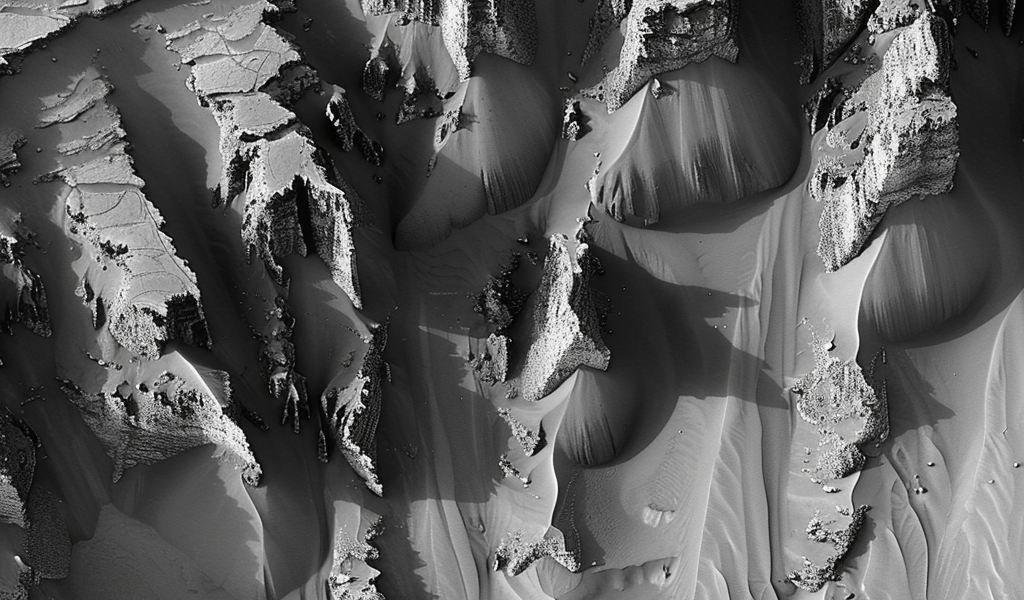Hundreds of black ‘spiders’ have been spotted in the mysterious ‘Inca City’ on Mars in new satellite photos, revealing a fascinating phenomenon on the Red Planet. Every spring, these creepy black formations emerge as buried carbon dioxide ice releases dusty geysers of gas, creating a spectacle captured in recent images from the European Space Agency (ESA).
The Inca City formation in Mars’ southern polar region is home to these dark, spindly structures that resemble tiny spiders huddling together. However, these formations are not arachnids but channels of gas ranging from 0.03 to 0.6 miles in width. The onset of Martian spring triggers the melting of carbon dioxide ice layers, causing the gas to sublimate and form these intriguing patterns.
The gas, carrying dark dust from the planet’s surface, bursts out of the ice layers, creating a visual display akin to cracked spiderwebs. Some geysers can penetrate ice layers as thick as 3.3 feet, as observed by the ESA satellites. The ExoMars Trace Gas Orbiter captured images of these ‘spiders’ in 2020, showcasing the aftermath of dusty gas eruptions during the spring season.
The Inca City, also known as Angustus Labyrinthus, features linear ridgelines that resemble ancient ruins, adding to the mystique of this Martian landscape. The recent images provide valuable insights into the seasonal changes and geological processes occurring on Mars, offering scientists a deeper understanding of the planet’s dynamic environment.
These remarkable observations highlight the ongoing exploration of Mars and the continuous discoveries made possible by advanced satellite technology. As researchers delve further into the mysteries of the Red Planet, each new revelation brings us closer to unraveling the secrets of our planetary neighbor.





